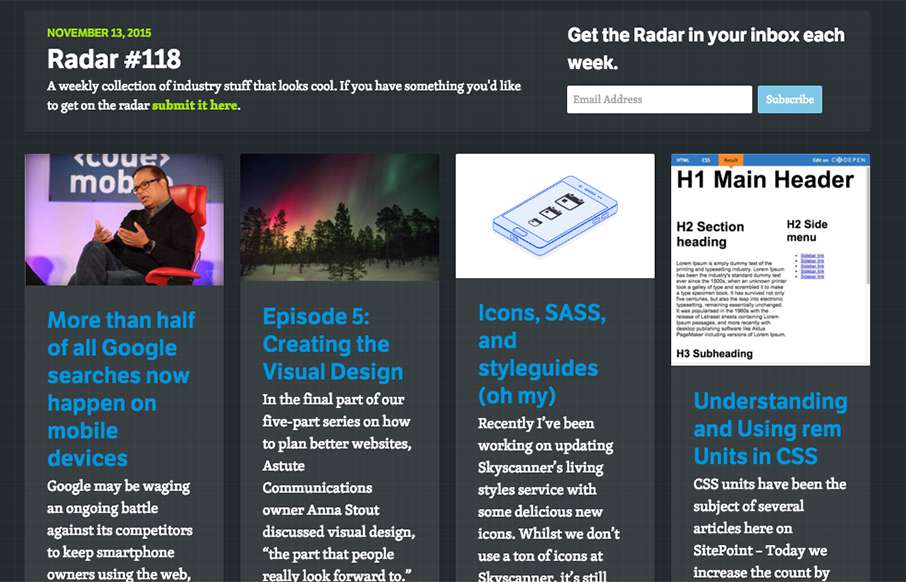More than half of all Google searches now happen on mobile devices
Google may be waging an ongoing battle against its competitors to keep smartphone owners using the web, but recent evidence suggests it’s making progress. Google’s Amit Singhal, senior vice president of search, said today Google now sees more than half of its 100 billion monthly searches occurring on mobile devices.
Episode 5: Creating the Visual Design
In the final part of our five-part series on how to plan better websites, Astute Communications owner Anna Stout discussed visual design, “the part that people really look forward to.” Yet because of today’s vast array of screen sizes and shapes, she emphasized the importance of beginning the visual design process by focusing on responsive […]
Icons, SASS, and styleguides (oh my)
Recently I’ve been working on updating Skyscanner’s living styles service with some delicious new icons. Whilst we don’t use a ton of icons at Skyscanner, it’s still vital that we don’t use the same icon to mean different things. Providing a ‘single source of truth’ means that everyone in the company can source resources from […]
Understanding and Using rem Units in CSS
CSS units have been the subject of several articles here on SitePoint – Today we increase the count by having an in-depth look at rem units, which have excellent browser support and a polyfill if you need support for old IE.
Some SaSS tips or my own styleguide
This is just a little group of tips and best practices that can be used as SaSS styleguide. What? You don’t know what is SaSS? Then get out from under that rock and visit this page.
Inlining Critical CSS for Dynamic Web Apps
During the redesign I was faced with a problem and I had to rethink the way I inline CSS in my blog, so I figured it’d be a good time to write about it in more detail. Critical CSS inlining is a technique you can use to speed up the performance of your web apps […]
Why the mobile web runs so slowly
Visiting a web page on a phone or tablet can be irritating and not just because the speed of mobile connections can be far below that of the average home network. The experience is made worse by pop-up, rollover and interstitial ads, navigation bars and the like that make a page jump up, down, left […]
A Gmail first Strategy for Responsive Emails
Every email project is different. But when I create responsive emails that need to work in the Gmail App too, I fall back to the same strategy over and over.
Chrome Devtools Tips & Tricks
Lately I’ve spent more time than usual using the Chrome Developer Tools. Along the way I found a couple of nice features that I had previously missed (or at least hadn’t needed enough to look for; e.g. blackboxing and asynchronous stacktraces). Because of this, I wanted to summarized a few of the features that I […]
Exploring the Product Design of the Stripe Dashboard for iPhone
This article is about the creation process of Checkout, and more generally, about how I design products. It’s not necessarily a new way of doing things but I wanted to share it for the curious.
Each week, we do a round up of curated “stuff from the interwebs” that we call Radar.
If you like it and want to receive it in that inbox thing (and you’ll get it sooner than anyone else) – then you can sign up at the top of the Radar page.
If you want to add something to next week’s Radar – submit it here.
Here’s the link to this week’s batch of goodness: Radar #118.






0 Comments